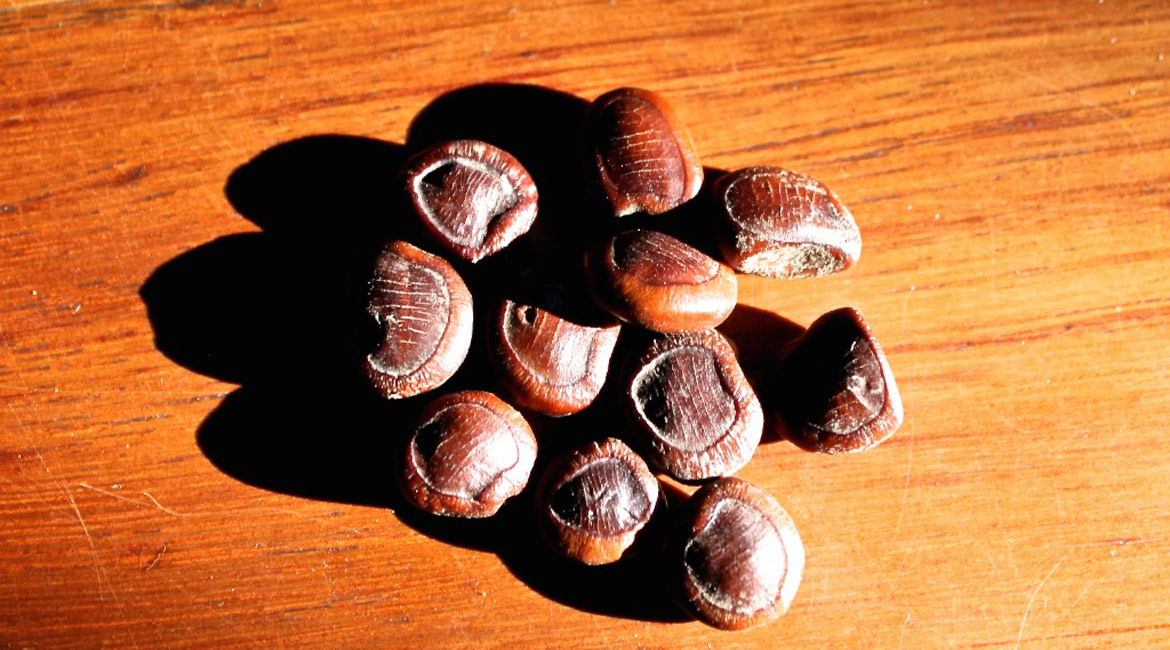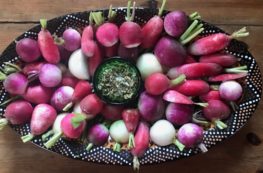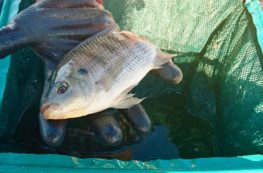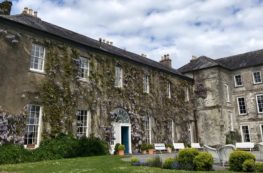Because of a crushing farming schedule, our friend Bruce was unable to attend my recent 50th birthday party. Instead, he sent me a folded note in which he’d wrapped 11 seeds, the color of dark caramel and the size of my baby fingernail.
“Dear Annabel,” it read. “I am so sorry I am not going to make it today. I hope you have a celebration worthy of the occasion. I also hope you have many more, certainly enough to enjoy the fruits of the enclosed. …”

When later I wrote to thank Bruce, I asked him what the seeds were. This was his reply:
“Dear Annabel … I am sorry. I LOVE puzzles and I NEVER give away the answers! But, because they are for your birthday, I will give you some clues. … [The seeds] will grow into very big trees. I’m not certain whether they are native to India or Africa (they are found in both places, and I think even the botanist jury is still out on that one). When they fruit, it won’t be the seeds you will be eating. Long before they fruit you will be able to enjoy them … well, for more than just their shade. I have some spare seeds here which I will try to propagate nearer to the rains – as back-up. I suspect I will scarify the seeds a little (scratch the coating with a nail file) to aid germination. I think they will appreciate heavier soil. Hope that helps. Enjoy.”
Not long after I received Bruce’s email, I was chatting with my Zambian assistant, Adelina Banda, when she pointed to the seeds on my desk and asked me where they’d come from. I said they were a birthday gift from Bruce, and asked her why she was interested to know.
“Those are seeds from the Musika tree,” she said, smiling. The Musika tree? I’d never heard of it. “The fruit from this tree is very tasty. It’s sweet and sour at the same time. Our children love the Musika fruit. We soak the flesh in water to separate out the seeds, and after adding a little bit of sugar and water, we freeze it in small plastic bags to make popsicles for them.”
The Musika tree, I soon found out, is the Tamarind tree. Hooray, and thank you Adelina! The Tamarind tree … in which its seeds are said to be symbols of faithfulness and forbearance in Buddhist teachings. The Tamarind pulp … which is said to consist of an almost perfect sweet and sour balance, is rich in vitamin B and calcium, but in which there is so much tartaric acid it creates sores in your mouth if it isn’t soaked first. THE MUSIKA-TAMARIND TREE!

“Dear Bruce … I’m guessing these are tamarind seeds. Why? Because Adelina Banda, with whom I work, wanted to know who gave me the seeds. I told her it was you … and she said they were seeds from the Musika tree. To Google I turned where I found out that the Musika tree was in fact Tamarindus indica L. …”
“Dear Annabel … I obviously gave you far too many clues. They are indeed Tamarind, and I look forward to your first jar of chutney (or whatever) with Tamarind pulp in it. I think the tree will give you lots of pleasure in the meantime. …”
I think it will, too. Thank you, Bruce!




